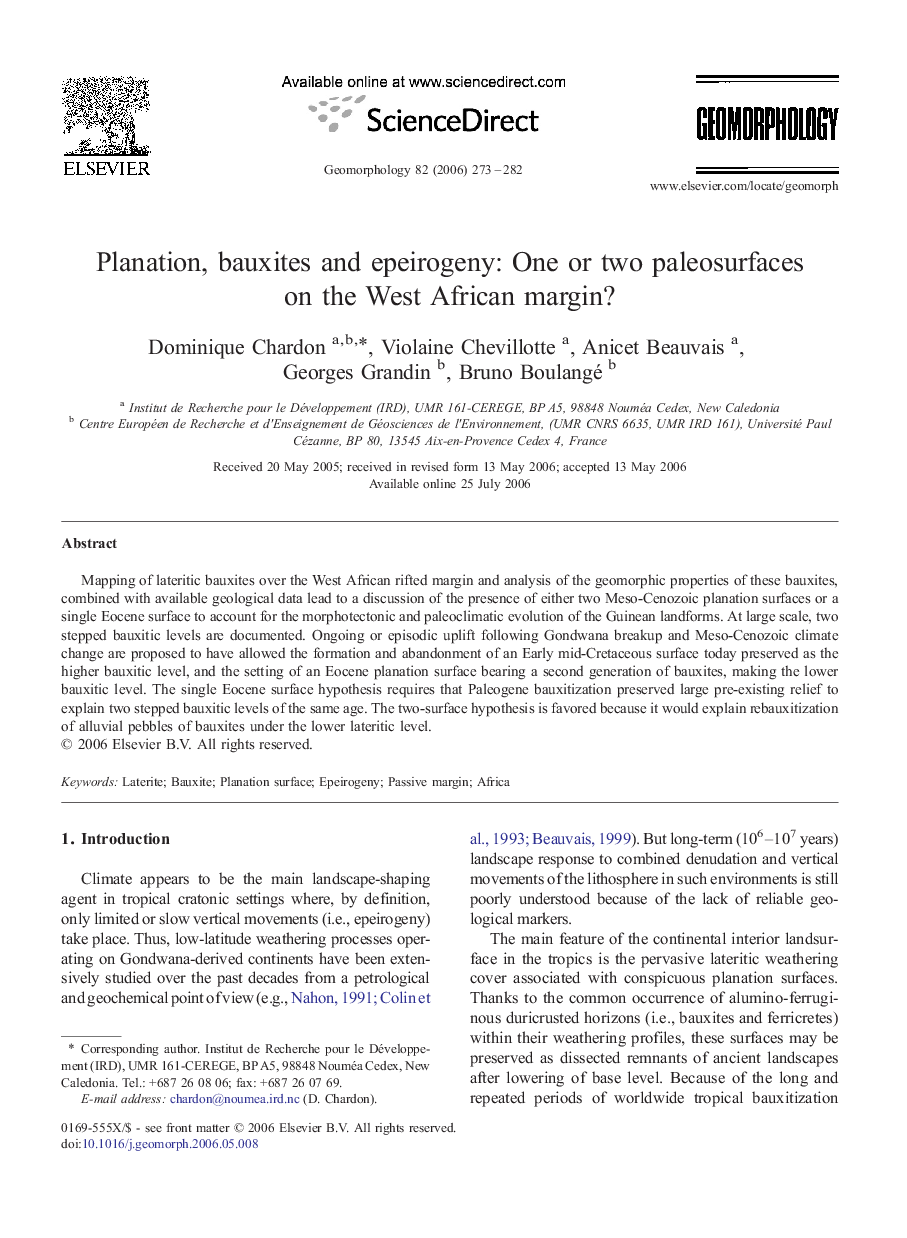| Article ID | Journal | Published Year | Pages | File Type |
|---|---|---|---|---|
| 4687293 | Geomorphology | 2006 | 10 Pages |
Mapping of lateritic bauxites over the West African rifted margin and analysis of the geomorphic properties of these bauxites, combined with available geological data lead to a discussion of the presence of either two Meso-Cenozoic planation surfaces or a single Eocene surface to account for the morphotectonic and paleoclimatic evolution of the Guinean landforms. At large scale, two stepped bauxitic levels are documented. Ongoing or episodic uplift following Gondwana breakup and Meso-Cenozoic climate change are proposed to have allowed the formation and abandonment of an Early mid-Cretaceous surface today preserved as the higher bauxitic level, and the setting of an Eocene planation surface bearing a second generation of bauxites, making the lower bauxitic level. The single Eocene surface hypothesis requires that Paleogene bauxitization preserved large pre-existing relief to explain two stepped bauxitic levels of the same age. The two-surface hypothesis is favored because it would explain rebauxitization of alluvial pebbles of bauxites under the lower lateritic level.
